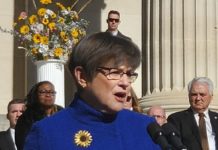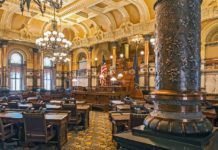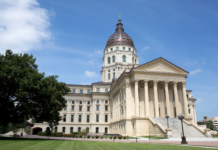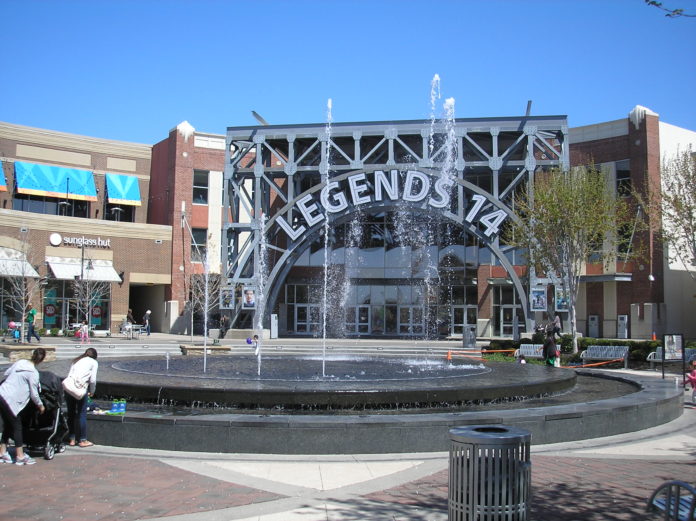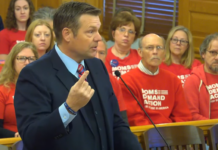A special tax incentive intended to generate tourism for Kansas is failing to bring many out-of-town visitors for most of the projects that it’s been used to help bankroll.
A new legislative audit of sales tax revenue – or STAR – bonds found that only three of 16 projects financed with the incentive are meeting the state’s goals for bringing in visitors from out of town.
The audit concluded that in several instances, the developments would have occurred at the site of those projects even without the incentive and that it would take decades for the state to recoup the sales taxes it gave up to finance some of those projects.
The lieutenant governor strongly defended the program, saying the audit’s assumptions, flawed methodologies and limited scope of review resulted in a missed “opportunity to provide a more comprehensive review of the program.”
Lt. Gov. David Toland said the auditors had a “clear, fundamental” misunderstanding that local economic development doesn’t mean success for the state.
“State investment in our local communities, leading to more vibrant communities, is exactly what we want from a results perspective,” Toland wrote in response.
“Having local attractions, job creation, housing, etc., all lead to successful cities, which in turn lead to a successful state,” he wrote.
The audit is the latest criticism of STAR bonds, which have drawn the ire of lawmakers for years after it was first revealed in 2005 that the incentive was used in Wyandotte County to pay for a barbecue lunch, an aquarium at Cabela’s and automated dinosaurs for a theme restaurant.
Trouble surfaced a couple years ago when lawmakers discovered plans to divert sales tax proceeds generated from the Village West STAR bond project — once it was paid off — to a STAR bond project proposed for the American Royal.
Back in 2018, lawmakers considered restrictions that critics said were so onerous that it would have shut the program down.
And last session, the Legislature extended the sunset for the program until 2026 with a provision that requires developers to have a plan for detailing how visitors would be tracked and presented to the Commerce Department yearly.
The plan must include reporting of visitor ZIP code data to the agency in a manner without personal identifying information.
For some lawmakers, the audit validated long-running skepticism they’ve had about the incentive, which was created initially to help pay for Kansas Speedway.
Republican state Sen. Caryn Tyson of Parker called the audit “demonstrative” of what is happening with the STAR-bond program.
“We’ve had it in place for over 30 years now and we’re not seeing results from it,” Tyson said.
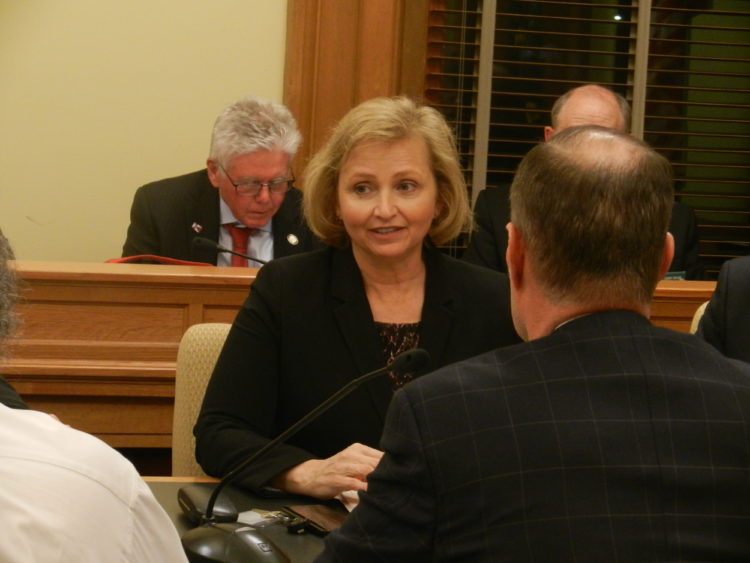
As of last November, about $873 million in mostly state sales taxes has gone toward retiring about $1.1 billion in STAR bonds.
The audit examined STAR bonds a couple of ways: whether they were financing projects that are bringing visitors from out of town and how long it was taking the state to recoup the sales taxes it foregoes to finance a project.
While there are no tourism benchmarks established by state law, the Commerce Department established two goals for projects financed with STAR bonds – neither of which was being met by most of the projects.
It was the agency’s goal that STAR-bond-funded attractions draw 20% of their visitors from outside of Kansas and 30% of its visitors from at least 100 miles away.
“Meeting these two goals is important because tourists are more likely to create new spending in the Kansas economy than Kansans,” the auditors said.
For years, there’s been little or no information accounting for how many visitors are coming to Kansas to visit the various STAR bond projects in Dodge City, Overland Park, Manhattan and Wichita, among others.
Commerce officials told the auditors they receive projections for out-of-town visitors from feasibility studies done by the project developers, but acknowledged the estimates are made years before a project is built and can be overly optimistic.
So auditors turned to a data company called StreetLight, which uses cellphone and vehicle global positioning location data to develop their tourism estimates.
Using that data, auditors found that just three projects – Heartland Park in Topeka, the Hutchinson Underground Salt Museum and the Kansas Speedway on race day – met both of the agency’s goals in either 2018 and 2019 or both years.
The Village West Legends retail area near the Kansas Speedway drew more than 20% of its visitors from other states in 2018 and 2019.
However, only about 15% came from more than 100 miles away, the audit said.
Most out-of-state visitors came from the Missouri side of the Kansas City metro area.
About 76% of the people who visited the Legends in 2018 and 2019 were Kansas City-area residents, according to the audit.
The auditors suggested that STAR bonds attractions likely have more local value because they enhance the local quality of life by providing new amenities.
“They may stimulate local jobs, capital investment, and local governments’ tax revenues,” the audit said.
“These may in turn stimulate additional economic effects for the local area.”
However, the auditors noted that local amenities that don’t attract many out-of-state visitors are less likely to produce new economic activity and revenue for the state.
“Economic research suggests local visitors are generally likely to shift existing economic activity from one part of Kansas to another,” the audit report said.
“It also suggests people likely spend similar amounts on entertainment regardless of where they do so,” the audit said.
The audit cited the Wichita Sports Forum, noting a family probably would have visited other attractions even if it hadn’t been built.
The sports complex, the audit showed, failed to meet either goal of attracting 30% of its visitors from more than 100 miles away or 20% of its visitors from out of state.
“The STAR bond attraction likely didn’t cause them to spend money in Kansas when they otherwise wouldn’t,” the audit said.
The auditors said the scenario could be true for Kansas City-area attractions that bring visitors from across the Missouri side of the metro area.
“For example, if the Overland Park Prairiefire area hadn’t been built, it’s possible the Missouri visitors would have visited other entertainment areas in Kansas instead.”
While many STAR bond attractions may help improve the general and economic welfare of Kansas communities, their focus on fostering tourism for the state is what sets them apart from other incentives, the auditors said.
“Primarily drawing local visitors and providing local benefits doesn’t seem to satisfy the intent of the STAR bonds program,” the auditors said.
Auditors looked at three projects in developing an assessment of how long it would take the state to recover the sales taxes that were funneled into the project.
The earliest the state is expected to get back its investment for the Hutchinson salt museum is estimated somewhere between 2057 and 2132.
The state could recover its investment for the Prairefire project in Overland Park sometime between 2046 and 2104.

Toland fiercely defended the program in a point-for-point rebuttal of the audit.
Toland said the audit failed to consider the full scope of the legislative intent of the STAR-bond program, the revenue-generating success of Village West and employed flawed methodologies such as using data from StreetLight.
The agency agreed with the auditors that tourism is an important component of STAR bond projects.
However, the agency also said that promoting the “general and economic welfare” of the state is a critical goal of the program that auditors generally ignored.
The audit “focuses predominately on its own notion of ‘economic welfare’ and assigns too much weight to certain visitation guidelines in reaching its conclusion that only a limited number of projects have met legislative intent,” Toland said in the response.
Toland said the auditors focused too narrowly on certain visitation metrics and didn’t fully address legislative intent and other statutory goals.
The auditors, he said, didn’t consider that Commerce has promulgated regulations that provide criteria for reviewing and analyzing STAR bond projects.
He criticized the auditors for failing to mention those criteria in their report.
“The regulations provide formal guidance to cities and developers as to the visitation attributes Commerce considers when evaluating potential project,” Toland wrote.
“However, visitation is only one criteria used to evaluate projects and the other criteria aren’t adequately considered” by the auditors.
He said the auditor’s “over emphasis” on “aspirational visitation goals,” as compared to the statute’s legal requirements “short-changes Commerce’s review process as well as the many benefits these projects have on the quality of life in Kansas.”
Toland also questioned the use of the data from StreetLight in arriving at the estimates of who is visiting the attractions and from where.
He noted that StreetLight only works if a person has their cellphone location services turned on.
He said various estimates show this means anywhere from 10% to 20% of the adult population is not counted.
Further, Toland said the numbers increased when children who typically do not carry a phone are added into the mix.
“Therefore, children who may visit an attraction with their parent or on a school field trip are not counted by StreetLight,” he wrote in his repsonse.
“This leads to drastic differences in the number Streetlight claims compared to the number that is representative of actual visitors,” he said.
Streetlight, and consequently the auditors, “can’t provide a reliable number of the people it can’t account for in each specific STAR Bond project, let alone their location of origin,” Toland wrote.


